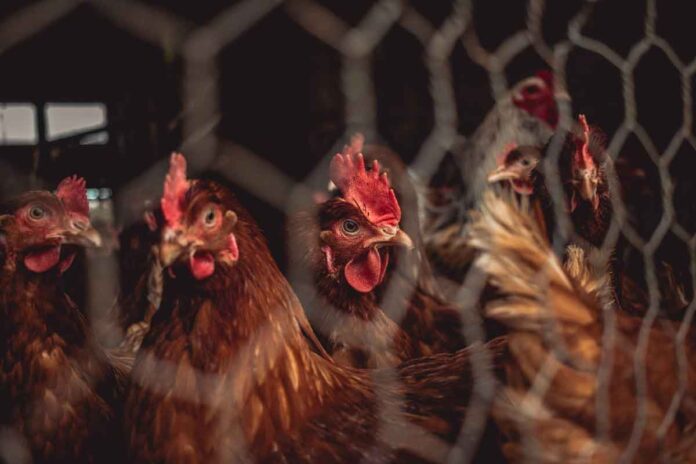
USPOULTRY and the USPOULTRY Foundation announced the completion of a funded research project at the University of Georgia in which researchers investigated the cause and prevention of false layer syndrome.
Dr. Brian Jordan and colleagues at the University of Georgia have completed a research project to determine if infection with infectious bronchitis virus (IBV) alone, especially the IBV variant strain DMV/1639/11, could induce cystic oviduct formation and lead to false layer syndrome, as well as evaluate the efficacy of a day of hatch vaccination at preventing this clinical presentation. Findings showed that multiple IBV types can cause cystic oviduct formation that leads to false layer syndrome. Further, vaccines alone may influence the severity of lesions after challenge but are not sufficient to prevent the oviduct from being affected from a pathogenic early challenge.
False layer syndrome refers to a condition where mature hens ovulate normally but have a decrease in, or lack of egg production. They are found at peak egg production and exhibit little to no other clinical signs. Some birds affected by false layer exhibit waddling or a pendulous abdomen when palpated, but many appear normal. The ovaries of false layers can also appear normal, including empty follicles from recent ovulation. Cyst development in the oviduct is hypothesized to cause False Layer Syndrome, and these cystic oviducts may cause permanent damage that cease egg production in affected birds. Infectious bronchitis virus (IBV) disease can lead to development of cysts in oviducts, which are strongly associated with False Layer Syndrome. Several IBV strains have been associated with False Layer Syndrome, including the QX, Massachusetts and Australian T strains. Recently, a new strain of IBV, DMV/1639/11, has been associated with cystic oviduct development and false layer syndrome in the United States and Canada, though no causal relationship had been shown.
The goal of this project was to determine if infection with IBV alone, and especially the IBV variant strain DMV/1639/11, could induce cystic oviduct formation and lead to false layer syndrome, as well as evaluate the efficacy of a day of hatch vaccination at preventing this clinical presentation.
The first study evaluated variables that influence the development of cystic oviducts in specific pathogen-free (SPF) chickens. To investigate this, researchers challenged different groups of maternal antibody negative SPF chicks with either a pathogenic field isolate of DMV/1639 or a laboratory challenge strain of Mass41 at 3-, 7- or 14-days post hatch. Incidence of cystic oviduct was higher in birds challenged at 3 days of age with the DMV/1639 strain and 7 days of age with the Mass41 strain, but both the 3- and 7-day post hatch challenge induced a significantly higher number of cystic oviducts for both viruses than the 14-day of age challenge. This data shows at that multiple IBV types can cause cystic oviduct formation that leads to false layer syndrome, and age of infection is critical for influencing prevalence and severity of disease.
The second study evaluated how adding IBV vaccines influenced the development of disease after IBV challenge. Based on the previous study, researchers challenged four different groups of SPF chicks at 7 days of age with the same DMV/1639 virus used in study 1. The four groups were either not vaccinated on day of hatch, vaccinated with a Mass type IBV vaccine, or vaccinated with a GA08 type IBV vaccine. One of the non-vaccinated groups and both day-of-hatch vaccinated groups were then vaccinated at 14 days of age (which was 7 days post challenge), 6 and 12 weeks of age 3 with a Mass/Conn IBV combination vaccine. By 20 weeks of age, there was no difference between any of the groups in number of birds with affected oviducts, but there was less severe fluid presentation in the oviduct compared to more fully formed cysts in the non-vaccinated birds.
This data demonstrates that vaccines alone may influence the severity of lesions after challenge but are not sufficient to prevent the oviduct from being affected from a pathogenic early challenge.
The research was made possible in part by an endowing Foundation gift from Cargill and is part of the Association’s Comprehensive Research Program encompassing all phases of poultry and egg production and processing.
Information on other Association research may also be obtained by visiting the USPOULTRY website, www.uspoultry.org

















